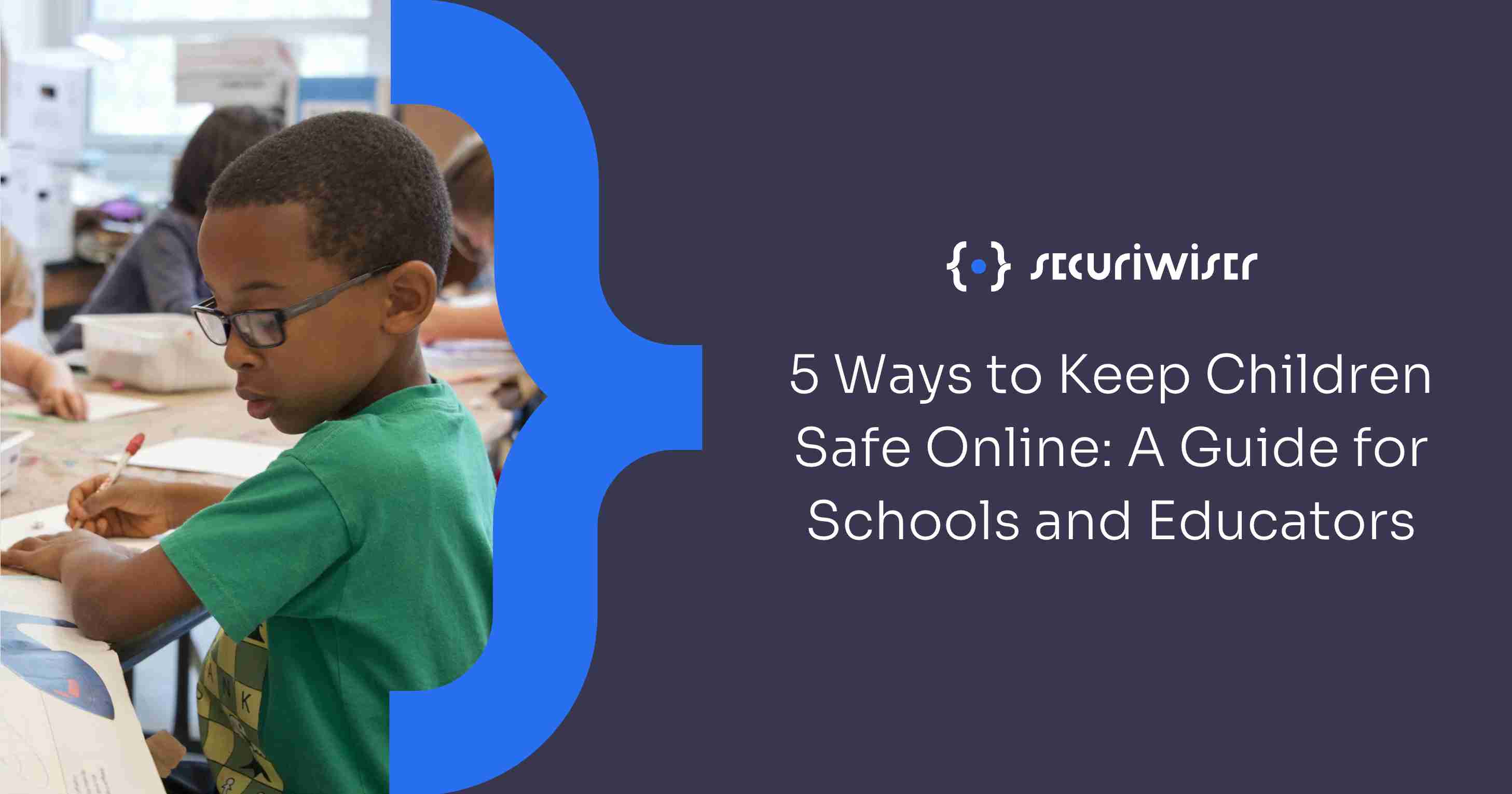5 Ways to Keep Children Safe Online: A Guide for Schools and Educators
Blog / 5 Ways to Keep Children Safe Online: A Guide for Schools and Educators
3 MIN READ

According to the Cyberbullying Research Centre, more than 60% of students who were affected by cyberbullying reported that it impacted their learning and sense of safety at school.
Additionally, statistics by Guardchild states that 70% of of children by the ages of 7-18 have accidentally encountered inappropriate content online while using the internet for homework.
These statistics reveal the urgent need for action to protect students from the many threats that are rampant in the digital world.
Schools, as primary guardians of children's well-being during the day, must take proactive steps to ensure their safety online. This blog outlines five essential strategies that schools can implement to keep children safe, help them navigate the internet responsibly and safely, and raise cybersecurity awareness in parents, guardians and educators
1. Education is key to keeping children safe online
The first step in protecting students online is education. Children need to be more aware of the potential risks they may encounter on the internet, such as cyberbullying, inappropriate content, online predators, and privacy issues.
Schools should incorporate internet safety into their curriculum, using age-appropriate materials to teach students about these dangers. Lessons should cover topics such as the importance of keeping personal information private, recognising phishing attempts, and understanding the consequences of sharing sensitive content online.
With proper orientation, schools can help children make informed decisions and keep them safe online by avoiding risky online behaviour.
2. Implementing Parental Controls
While schools can provide a safe online environment within their premises, children often access the internet at home or on personal devices. To extend online safety beyond the school, it's crucial to encourage and assist parents in setting up parental controls.
Schools can offer workshops or resources to guide parents in configuring these controls, which can limit access to inappropriate content and monitor online activity. This ensures that children not only have a consistent layer of protection, while in school, but also at home.
3. Implementing Safe Online Practices in School Environments
Schools must establish and enforce safe online practices within their own environments. This includes using secure networks, filtering content, and monitoring student internet usage during school hours.
Implementing a robust cybersecurity policy is essential to protect both the students and the school's digital infrastructure. This is very important as schools are often targets for cyber criminals
Additionally, schools should ensure that all devices used by students, whether provided by the school or personal, are equipped with the latest antivirus software and security updates. This way schools can minimise the risk of students encountering harmful content or falling victim to online threats. It can also significantly improve the school's overall cybersecurity posture, which at the end of the day minimises the costs and risks associated with poor cybersecurity.
4. Encouraging Safe Online Behaviour
Promoting safe online behaviour is another important aspect of keeping children safe on the internet. Schools should foster an environment where students feel comfortable discussing their online experiences and reporting any issues they encounter.
Encouraging open dialogue about internet safety can help identify potential problems early and allow for timely intervention. Schools can also create programs that reward responsible online behaviour, such as recognising students who demonstrate safe online practices. By reinforcing positive behaviour and creating a supportive community, schools can help students develop a healthy relationship with technology.
5. Training Staff and Educators on Safe Online Practices
Finally, all school staff and teachers must be trained in safe online practices. Teachers and administrators should be knowledgeable about the risks students face online and the best strategies for addressing them.
Regular professional development sessions can keep staff up to date on the latest online threats and protective measures. Educators should also be equipped to handle situations involving online safety issues, such as cyberbullying or exposure to inappropriate content. This will allow schools to create a unified approach to safeguarding children online.
Conclusion
Protecting children online is a shared responsibility that requires the collaboration of schools, parents, and the broader community. Schools, alongside other stakeholders, can create a secure digital environment where children can thrive. As technology continues to evolve, schools need to remain vigilant and proactive in their efforts to keep students safe in the digital world.
Previous Article
How to Train Teaching Staff on Safe Online PracticesNext Article
Why Cybercriminals Target SchoolsHow secure is
your school?
Blog categories
How secure is
your school?